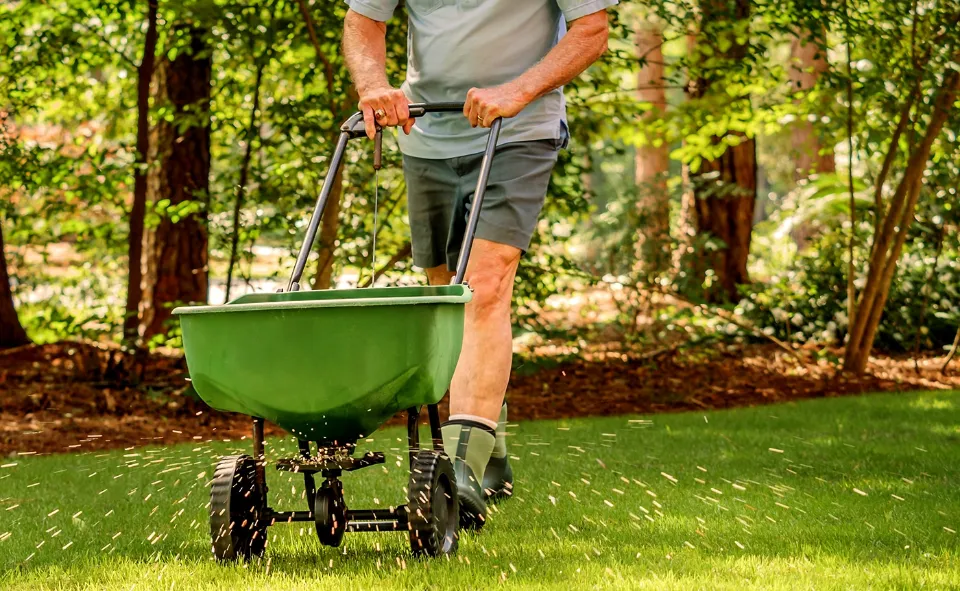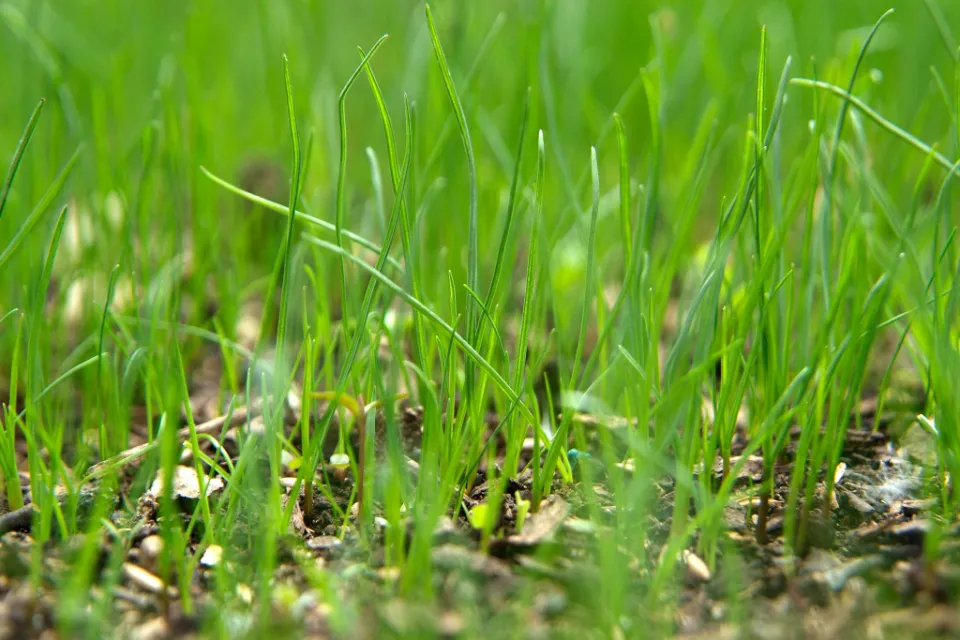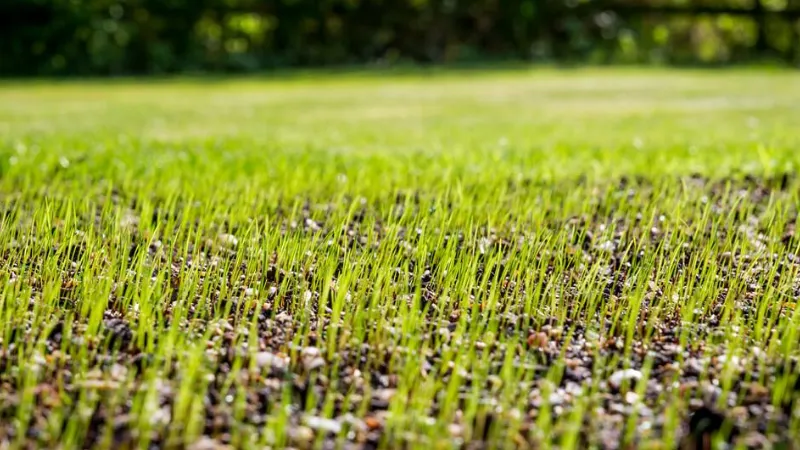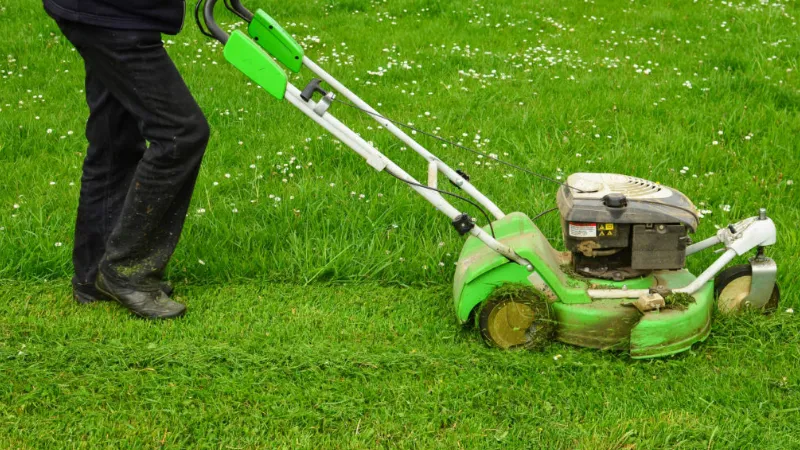Fall is the ideal time to plant a variety of grasses due to the milder temperatures and increased moisture. To create a lush, healthy lawn, use these tips for planting grass seed in Fall.
When planting grass seeds in the fall, you need to consider soil preparation, choose grass seed, plant grass seed, water grass seed, and grass seed germination.
Please read on for more detailed information.
Tips for Planting Grass Seed in Fall
How to make sure your fall grass seed sprouts quickly and successfully.
Soil Preparation
It is best to amend the soil before planting, as with any garden bed. For compacted soils or soils that are primarily made of heavy clay, it is especially crucial.
Compacted soils should be loosen; you can use a spade fork to do small patches or a tiller to do an entire bed. Spread a few inches of compost on the ground and work it in if the soil is poor (for example, if it is impervious clay or sand that resembles a sieve). Compost helps clay soil drain better and sandy soil retain moisture and nutrients. Additionally, it includes nutrients and helpful microbes.
Choosing Grass Seed
Pick a seed mixture appropriate for the climate and conditions where you live. Numerous grass seeds sold in bags are combinations of different grass species or varieties. In addition to fostering genetic diversity, this aids in ensuring resistance to environmental elements like drought or high pedestrian traffic.
Some grass seed mixtures are labeled specifically for trouble spots like shade or heavy traffic by manufacturers to make it simpler for the consumer. These mixtures include the varieties that are most appropriate for the circumstance. But, How Long Does Grass Seed Last?
Kentucky bluegrass, fine fescue, and perennial ryegrass are common additions to popular mixtures. Each brings something different to the table. Together, Kentucky bluegrass, fine fescue, and perennial ryegrass make an imposing team that creates a thick, lush carpet, tolerates heavy foot traffic, and takes shade. Additionally, the Kentucky bluegrass, which emerges slowly, is shielded by the quick-sprouting fine fescue.
To develop your lawn maintenance strategy, learn how to identify crabgrass. Below will give you a full explanation of what is crabgrass.

Planting Grass Seed
Spread the grass seed once the soil has been prepared. Although a handheld spreader will disperse the seed more evenly, small batches can be planted by hand. With a drop spreader, which scatters the seed beneath it, or a broadcast spreader, which fans the seed out in a circular motion, larger areas can be covered.
Using a garden rake, gently work the seed no deeper than a quarter-inch into the soil after it has been spread. When seeding an entire lawn, think about renting a lawn roller to smooth the soil and improve seed-to-soil contact.
After that, mulch the area with straw or a biodegradable seed starter made from paper, an adhesion promoter, and seed-starting fertilizer. Mulch helps discourage bird browsing while keeping seeds moist for germination.
Watering Grass Seed
Mulch helps keep the seedbed from being baked by the sun, but watering is still required. The key is to keep seeds (and later tender seedlings) moist but not soggy. Every morning watering is required for a mulched bed. It takes two or three light waterings per day to maintain an unmulched bed.
Grass Seed Germination: What to Do When Grass Sprouts
Depending on the species, grass seed can germinate in anywhere between five days and three weeks. You can reduce watering after grass seedlings start to grow. Gradually increase the intervals between daily and every other day, every three or four days, and finally weekly.
The answer to the question “does grass seed grow in the winter?” depends on your location and the particular variety of seed. Ensure that you sow your grass seed early enough for it to take root before the ground freezes. A full growing season is necessary for grass to mature and become ready for heavy foot traffic. This process can take several months.
Check for any bare spots that require reseeding when seedlings are about an inch tall. You can begin mowing when new grass is about three inches tall — a milestone that might not be met until spring.

Should You Be Plant Grass in the Fall Or in the Spring?
The answer depends on the type of grass seed you’re planting. The ideal time to plant cool-season grasses like Fescue, Rye, and Bluegrass is early fall. When the temperature is between 60 and 80 degrees Fahrenheit, these grasses thrive and gain from the shorter days and chilly nights. Crabgrass and foxtails are also less of a competition.
Conversely, it is best to plant warm-season grasses in the late spring or early summer, following the last frost date. A few of these are Bermuda and St. Augustine and Zoysia.
Can you mow wet grass? Short answer: No. Whether it’s early morning and the lawn is still dewy, a rainstorm just ended, or you just ran your sprinklers, you should skip the mow for now. Please read on for more detailed information.
Is It Worth Putting Grass Seed Down in October?
It depends, but some gardening professionals concur that this is a good idea. However, if it’s after the second week in October, it might be preferable to wait until spring.
Although they can be planted successfully up until the middle of October, grass seeds are typically best sown in September. Grass seeds may even be planted in November if the winters where you live are milder. However, this is usually not advisable.
A frost wave may cause grass seeds that have just begun to sprout to wither and die. On the other hand, if November is your only option and you missed the ideal sowing season, go for it. You shouldn’t plant seeds until it is sufficiently cold outside. The seeds won’t start sprouting until spring because of the cold temperatures.
If you act quickly and avoid overseeding a lawn in the fall, your lawn will be in the best condition possible next spring. We advise taking action as soon as possible because, as the experts advise, the earlier seeding is done, the better.
Read about
Timing is Everything
The best time for fall grass planting is right around Labor Day. This will give the new seedlings enough time to get established before winter, while avoiding the hot summer temps.
Pay attention to the weather report. It will be challenging for newly planted seeds to germinate during a heat wave or a cold snap. Rain showers will aid in the germination of your seeds, but if you plant right before a line of severe thunderstorms approaches, your seeds may be washed away in the downpour.
Take into account any weed-control substances you may have applied in the planting area. To ensure that you give enough time before seeding, check the product label.

FAQs
What Month Should I Put Grass Seed Down?
The best time to sow grass seed is in the fall in many climates. The still-warm soil of late August, September, October, or November encourages optimum root growth, while the cooling air temperatures discourage excessive top growth. This is ideal for growing lawn grasses and encouraging deep root development.
Do You Need to Water Grass Seed Everyday in the Fall?
Twice daily watering is essential until the new grass is up, then after one more week, reduce to once per day. According to the demands of the season and temperature, adjust this pattern.
How Long Does It Take for Grass Seed to Germinate in the Fall?
Whether you’re repairing bare spots, overseeding an existing lawn or starting from scratch, you can generally expect grass seedlings to emerge within seven to 21 days when grown under proper conditions. Before the grass is long enough to mow, it may take three to four more weeks of growth.
Should I Water before Or After Grass Seed?
A few days before planting your new grass seed, water the entire area about 6-8 inches deep each day. Once you’ve spread the seed, promptly spend about 5-10 minutes watering the top two inches of soil. The seeded area will need to stay moist so the grass seed doesn’t dry out and die.
Summary: Tips for Planting Grass Seed in Fall
When sowing grass seed in the fall, be sure to time it so that the germination is complete before your area experiences freezing temperatures. It’s crucial to consider any weed controls you may have used and to give yourself enough time to wait before sowing, as instructed on the label of the weed control product.
If you have any questions, please leave a comment. My Prime Home tries to give you the best home improvement information. Don’t forget to share the post. Thank you for reading.



